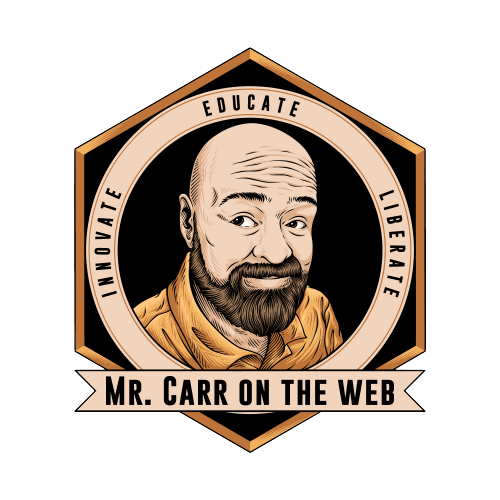Building AI Literacy for the Future with Evergreen’s AI Literacy Model
As educators, we all share a common goal: preparing our students for the future. But in a world where artificial intelligence (AI) is rapidly shaping industries, careers, and everyday life, how do we ensure they have the skills they need to thrive? That’s where the AI Literacy Model by Evergreen Education comes in—a powerful, comprehensive framework designed to help students develop essential AI-related knowledge and skills. And let me tell you, this isn’t just another "21st Century Skills" rehash. Evergreen’s team has truly crafted something special.
Meet the Team Behind the AI Literacy Model
Evergreen Education isn’t your average education think tank. It’s a dynamic group of practitioner-experts—educators and technologists—who’ve come together to create a framework that’s both practical and forward-thinking. What I love about their work is how rooted it is in classroom realities, while also tackling the big picture of AI integration. These are people who understand the challenges teachers face every day, and they’ve spent over 20 months making sure this model is something every school can use, no matter its resources.
What Makes This AI Literacy Model Different?
So, what exactly is the AI Literacy Model? It’s a well-structured framework built around six core domains, including AI Essentials, Future-Ready Thinking, and Ethical & Societal Implications, just to name a few. Each domain breaks down into clusters and competencies, ensuring students don’t just learn AI as a concept but as a set of practical skills they can apply.
But here’s the kicker: This model isn’t asking you to create a brand new class or drop everything for AI. Instead, it’s designed to be seamlessly integrated into what you’re already doing—whether you're teaching language arts, science, or social studies. AI becomes a tool to enrich the existing curriculum, helping students think critically, creatively, and responsibly about the technology they’re using.
Supporting Teachers at Every Level
One of my favorite aspects of the model is its scaffolding across grade levels. Evergreen thought through how AI competencies can grow with students, starting as early as Kindergarten. For example, while high schoolers might be diving into the ethics of AI in journalism, younger students are learning how to discern fact from fiction with AI-generated content. It’s a spiral learning model that ensures all students build up to the essential competencies they’ll need by graduation.
How Teachers Can Use the AI Literacy Model
To give you a sense of how this model works in practice, here’s an example of how a teacher could integrate AI literacy into their everyday classroom:
Imagine you’re a high school English teacher working with students on critical thinking. One of the key domains in the AI Literacy Model is Critical Thinking, which emphasizes evaluating AI-generated information and analyzing its societal impacts.
Here’s how you could structure a lesson:
Start with a Relevant AI Tool: Use an AI-powered content generator, like ChatGPT, to produce a short summary of the novel you're studying (let’s say The Great Gatsby). Show students the summary alongside a traditional one from a textbook or literary analysis.
Compare and Contrast: Ask students to analyze both summaries, identifying inaccuracies or missing themes in the AI-generated one. Discuss why the AI might have made those errors (e.g., limited context or incomplete data).
Class Discussion: Lead a conversation about how AI generates content and what that means for its reliability. This ties into the AI.CRTC.1 competency from the model, encouraging students to evaluate the credibility of AI information.
Extended Reflection: As a follow-up, students could write reflections on whether they think AI tools can replace human literary analysis and what that could mean for future education and journalism.
By using this framework, you’re embedding AI literacy into your existing curriculum while helping students hone critical thinking skills—skills they’ll need in an AI-enabled world.
Why You Should Care About AI in the Classroom
AI isn’t going anywhere. Whether it's automating tasks, enhancing creativity, or driving decision-making, our students will be living in an AI-enabled world. What I appreciate about the AI Literacy Model is how it equips students not just to use AI but to question it. It’s about developing critical thinking, problem-solving, and ethical reasoning alongside technical skills. That’s the kind of education that prepares students for life beyond the classroom.
Download Your Free Copy and Join the Conversation
This is where you come in. Evergreen Education has generously made their AI Literacy Model available for download, and they’re asking for feedback from the education community. It’s a rare chance to get involved in shaping a tool that could truly impact students everywhere.
I strongly encourage you to download your copy [here](insert link) and take a look at the amazing work Evergreen has done. Whether you’re ready to start integrating AI into your curriculum today or just want to get a better understanding of what’s coming, this model is the perfect place to start.
And hey, after you check it out, let me know what you think. I’m always up for a conversation about how we can better prepare our students for the future—AI and all.
Special thanks to the Evergreen Education team for their dedication to bringing AI literacy to the forefront of education.
